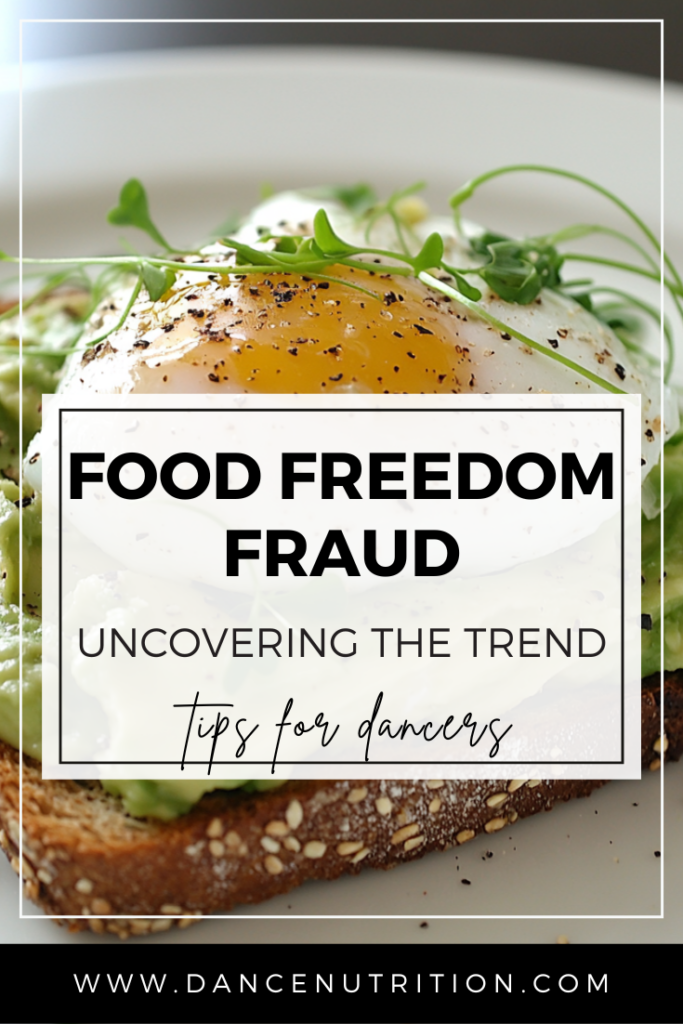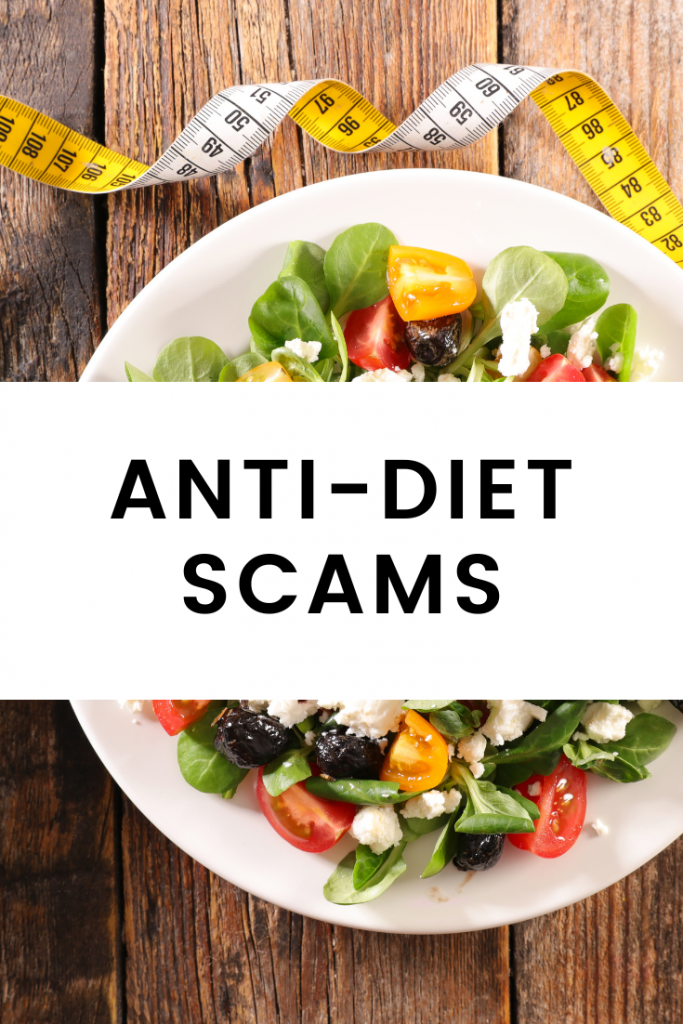In 2023, the U.S. diet industry was worth a staggering $90 billion. With that kind of financial power comes significant influence, particularly in shaping how we define “health” and “wellness.” I’ve previously explored what diet culture is, why it’s harmful, and why dancers, in particular, must dismantle it. But today’s diet culture is increasingly elusive. It’s no longer just about counting calories or cutting carbs. Instead, it’s showing up in subtler, more insidious ways— especially under the banner of “wellness.”
What Is the Dieting Mentality?
The dieting mentality refers to a pattern of thoughts and behaviors that influence mealtime decisions through the lens of diet culture. These decisions often aim to manipulate body size or composition— whether explicitly for weight loss or under the guise of performance or “health.” Even when intentions seem neutral, they often ignore key factors like food access, time, personal preference, or internal cues like hunger, fullness, and satisfaction.
Four specific eating personalities reflect the dieting mentality. Identifying which eating personality feels most relatable can help you uncover whether or not your mealtime decisions are a product of it.
The Wellness Industry: Diets In Disguise
Today, the wellness industry has adopted new language that makes diet culture harder to detect. Words like clean eating, food freedom, anti-diet, and holistic nutrition are everywhere— used to repackage old dieting rules in shiny new wrapping— not just by credentialed professionals but also by self-proclaimed “experts” with no regulated training.
From calorie-counting apps to color-coded food systems, many of today’s so-called “wellness” tools promise to help you eat smarter, manage your weight, or develop healthier habits. But look closer, and you’ll find a familiar pattern: restriction disguised as lifestyle advice. I previously unpacked how clean eating glorifies restriction. I’ve also shared a how-to guide for identifying five red flags of ‘anti-diet food freedom’ fraud.
But while the branding evolves the harm remains, and this article uncovers three fundamentals you should know about the trends.
What Dieting Tools Are Really Teaching You— And Why It Matters
#1: The Problem with Calorie Budgets
Most diet-focused tools begin the same way: by calculating a daily calorie budget based on your height, weight, age, and activity level. This might seem personalized and scientific, but it’s not. These quick calculations often miss the mark on your true energy needs, which are far more nuanced than an equation can capture.
More importantly, they reinforce the outdated “calories in = calories out” mindset. This overly simplistic view ignores the hormonal (appetite surges) and adaptive metabolic (energy conservation) responses to restrictive eating. Psychologically, the endless monitoring also takes a toll.
#2: Volumetrics: Why “More Food for Fewer Calories” Isn’t Always Better
Many of these tools lean heavily on the concept of volumetrics— a way of eating that encourages physical fullness through large volumes of low-calorie foods. Think: swapping raisins for fresh grapes, or pasta for zucchini noodles.
On the surface, this may seem helpful. But there’s a cost: volumetrics often sidelines higher-calorie, nutrient-dense foods (especially fats) because they take up a significant chunk of your calorie “budget.” That’s why these diets promote strategies like replacing olive oil with cooking spray or swapping nut butters with nut-based protein powders.
Here’s the issue: Fat is essential. It supports hormone health, improves nutrient absorption, and gives meals staying power. Without it, you’re left with meals that may fill your stomach, but leave you hormonally and emotionally unsatisfied. Over time, this can lead to chronic hunger, cravings, and increased preoccupation with food.
#3: Food Moralization in Disguise
Many diet tools categorize food into “better” or “worse” choices— sometimes with colors (like green, yellow, and red), other times with points that add up toward a daily budget. Regardless of how it’s framed, the message remains the same: eat more of the “good” foods, and be cautious— or feel guilty— about the “bad” ones.
Even when these systems are packaged as “lifestyle changes,” they still promote restriction by asking you to follow external rules instead of trusting your internal cues. Some even adopt anti-diet language, making them seem more compassionate on the surface while reinforcing the same harmful behaviors underneath. Here’s a great article that calls out Noom, a common diet known to use the anti-diet language.
These systems might appear helpful, but often lead to guilt, shame, and all-or-nothing thinking. When the “right” foods aren’t available— or just aren’t satisfying— you’re more likely to feel like you’ve failed. That’s when the familiar cycle begins: control → deprivation → backlash → guilt → repeat.
Be Mindful of Whose Giving You Advice
Many of these platforms offer coaching or community support. While this might feel comforting, it’s essential to ask: Who are you getting advice from?
Some tools rely on unlicensed health coaches with minimal training in nutrition or disordered eating recovery. Even credentialed sources can spew misinformation. I commonly see medical doctors advising restrictive dieting as a means to achieve “health,” without considering the bigger picture.
When it comes to food and nutrition, look for guidance from a Registered Dietitian Nutritionist (RDN)— especially one trained in intuitive eating (certification is a plus!). The titles “nutritionist,” “nutrition coach,” or “wellness expert” are unregulated, meaning anyone can use them regardless of experience or qualifications. Choose carefully and learn how a licensed practitioner can support your goals. You can even start with my program, The Healthy Dancer® for a tailored and evidence-based approach.
The Hidden Harm of Weight Tracking
Weight tracking is another common feature in diet-based tools. Whether it’s a daily weigh-in reminder or a graph to monitor progress, the goal is the same: control the number.
While it’s normal to feel curious about your weight in a culture obsessed with thinness, weight is not a reliable indicator of health. Body size alone tells us nothing about someone’s well-being, habits, or worth. Prioritizing weight loss has been linked to increased body dissatisfaction, obsessive behaviors, and yo-yo dieting.
Instead of chasing a number, consider working toward your set point weight range— a place your body can maintain naturally without food rules, restriction, or compulsive exercise. That’s where long-term health lives. I’ve previously discussed how dancers can identify a healthy (or “ideal”) weight (spoiler: it’s not what you think!).
The Bottom Line
It’s becoming harder to distinguish dieting from so-called “anti-diet” tools, especially when marketed using the language of wellness and behavior change. But here’s what to watch for: If something tells you to ignore your hunger, moralize your food choices, or obsessively monitor your body, it’s still a diet.
The best way to protect yourself? Learn to spot the patterns. Calorie budgets, point systems, and food categorization are modern ways to package the same old diet culture. As more tools hit the market, the goal isn’t to memorize every one, but to recognize what they all have in common.
With practice, you can develop a sharper lens and choose tools and strategies that support nourishment, satisfaction, and a peaceful relationship with food.




